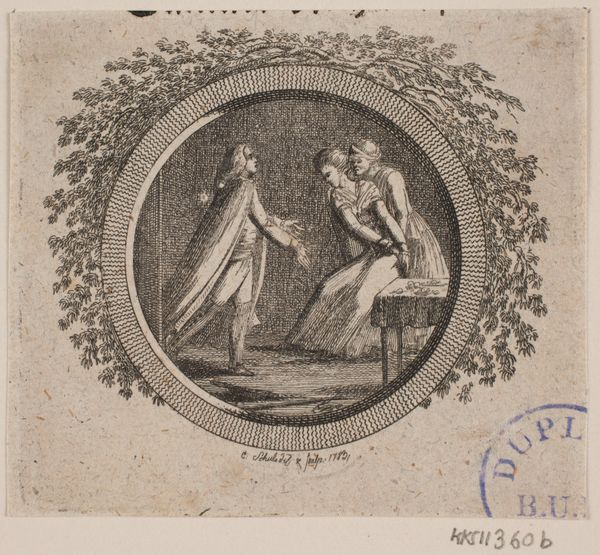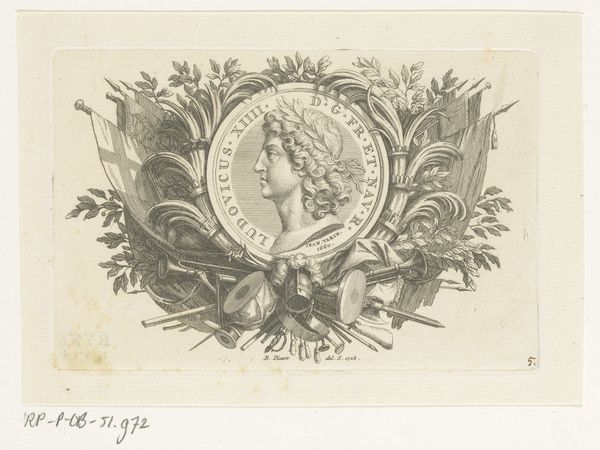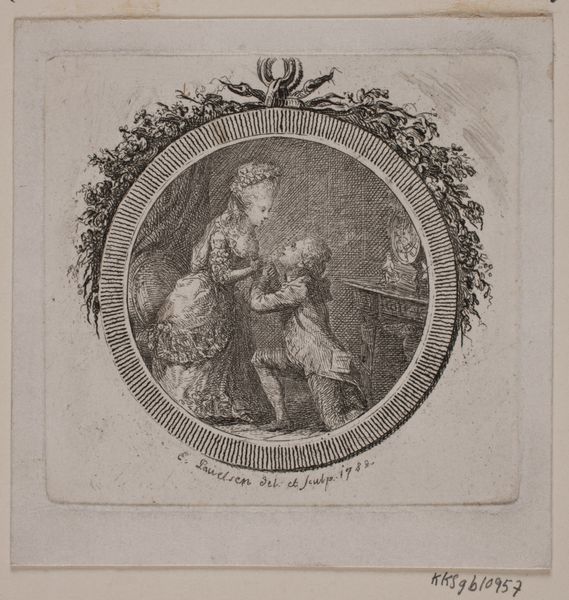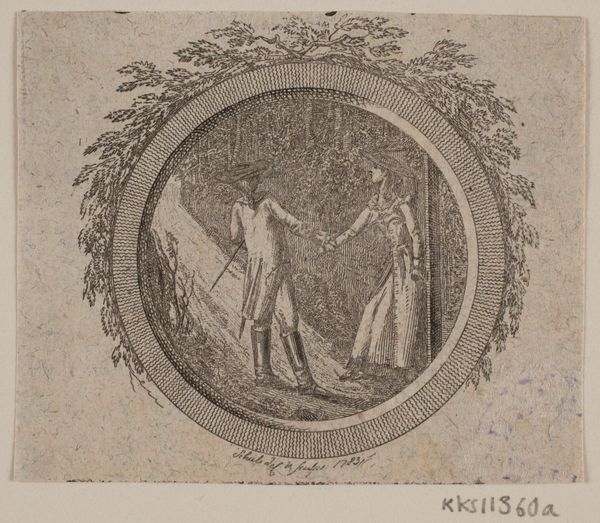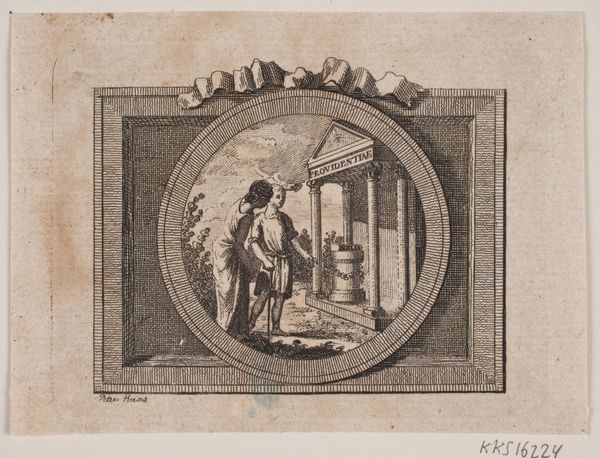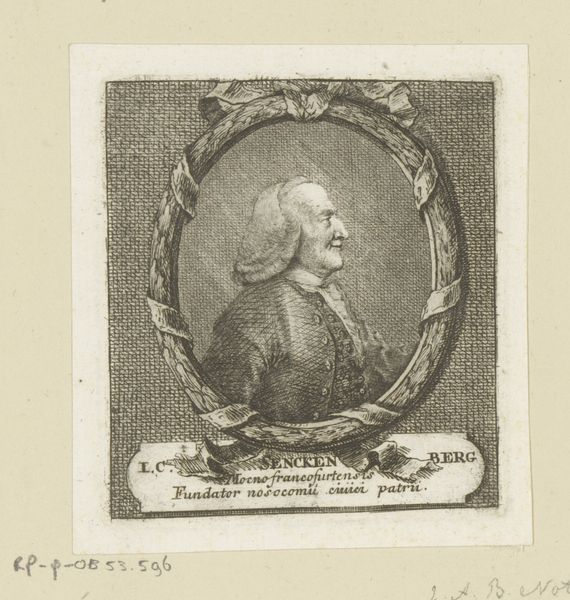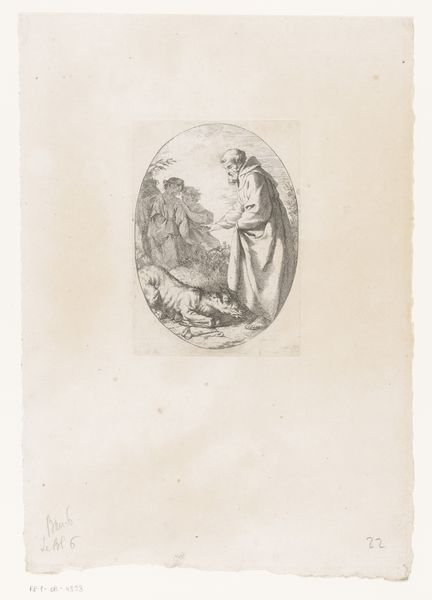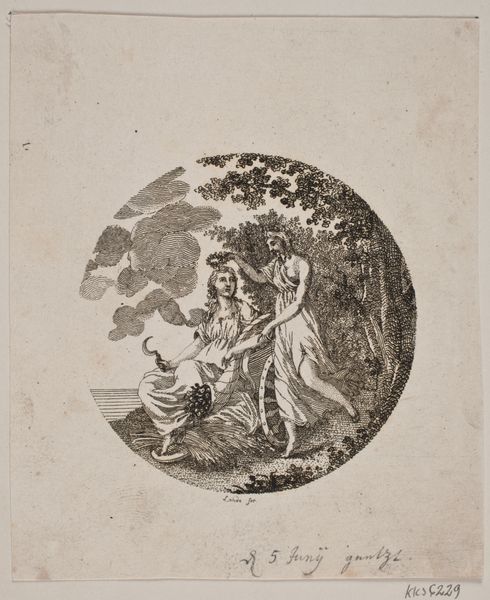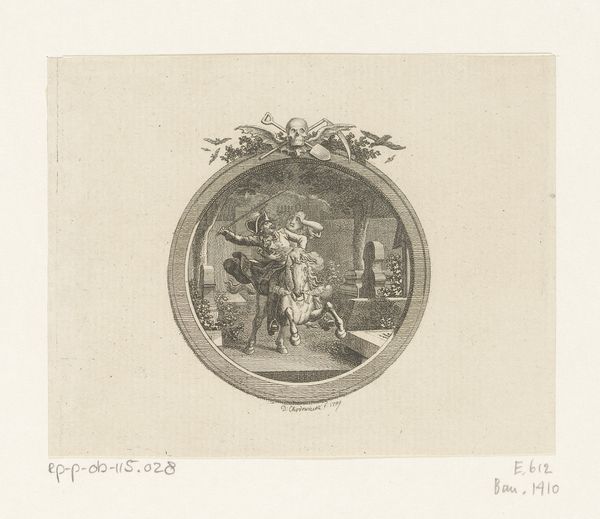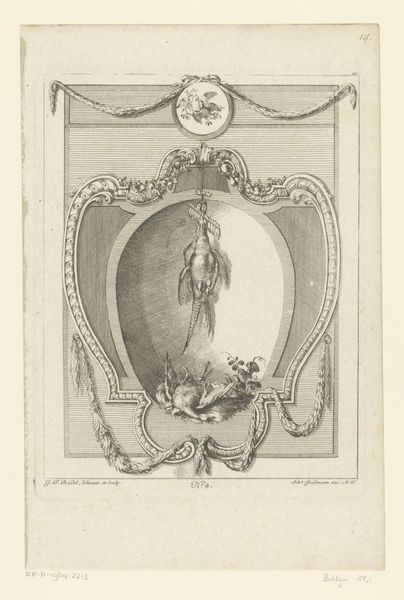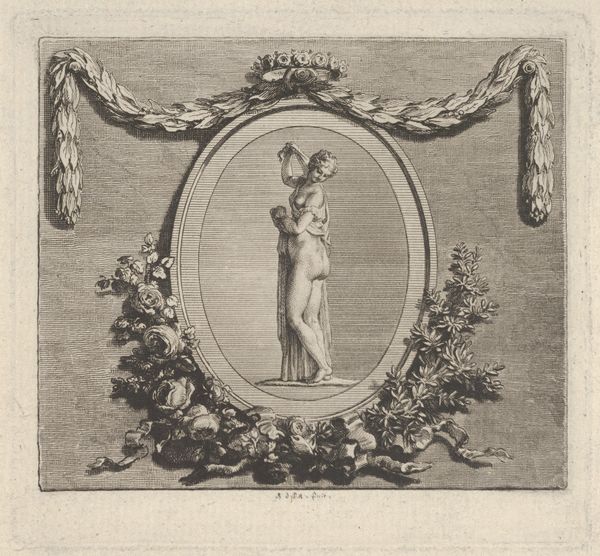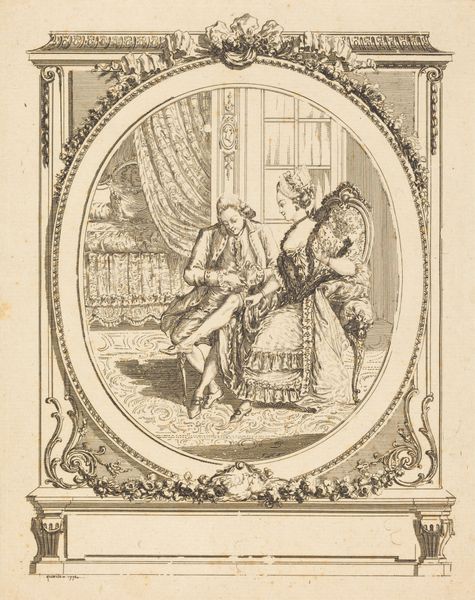
Titelvignet til S. Richardson: "Miss Clarissa Harlowes Historie", sjette del 1783
0:00
0:00
Dimensions: 60 mm (height) x 73 mm (width) (bladmaal)
Curator: Before us is "Titelvignet til S. Richardson: \"Miss Clarissa Harlowes Historie\", sjette del," an engraving by Georg Christian Schule, created in 1783. Editor: The scene is dominated by sorrow, or perhaps desperation. A figure looks up to a barred window; the light, almost hopeful, casts the scene in a melancholy aura. Curator: Indeed. The barred window and surrounding branch motif certainly contribute to the overarching narrative of imprisonment and a yearning for freedom. In terms of Romanticism, the artist highlights subjective emotions through the heroine Clarissa's story of forced marriage and imprisonment. We’re dealing with potent symbolism here. Editor: I agree, and I find the means of production quite fascinating, too. Considering it's an engraving, Schule's choice of light pencil work gives it such a sense of immediacy. Think of the tools, the labor, to translate those fine lines. What about the materials? Was this circulated widely or privately printed? Curator: I imagine that this work circulated, as it would have served as the vignette, or title illustration, to the sixth part of Samuel Richardson’s epistolary novel "Clarissa". Consider how its very existence served to entice readers, visually summarizing a very popular story of the time. Editor: The way it uses narrative to sell! I wonder about the relationship between the text and image. Did it cheapen or elevate Richardson's ideas? Or perhaps create an economic network where ideas are a sort of currency. Curator: That’s interesting to consider; the engraving is a symbolic anchor for Richardson’s ideas, visually translating the complex emotions within the novel, extending the text’s psychological weight into the cultural sphere. The delicate detail embedded in those marks creates an intensity for an expanding audience, one that could not access art or stories by other means. Editor: You’re right. It gave visual and material form to otherwise literary themes; printing made these themes less lofty and academic and brought them closer to a common readership. Thinking about Schule’s choices gives us some insights into consumption and its effects. Curator: Thinking through Schule's symbolism gives a peek into the social psyche of the late 18th century. Editor: Agreed. The material production of the print offers insight into not only social experience, but reading habits of the period as well.
Comments
No comments
Be the first to comment and join the conversation on the ultimate creative platform.
